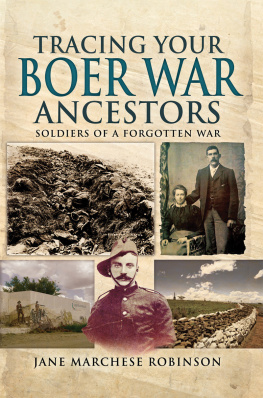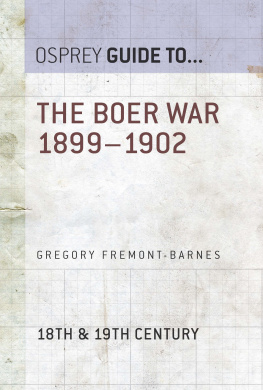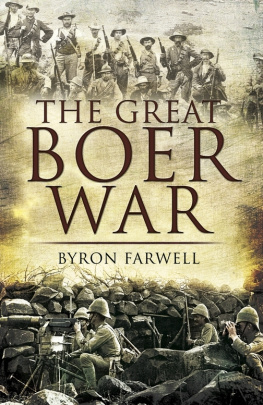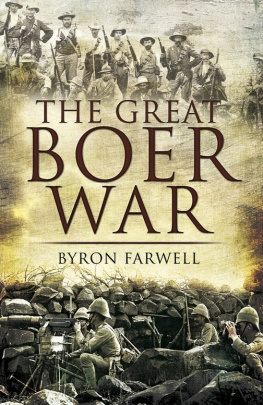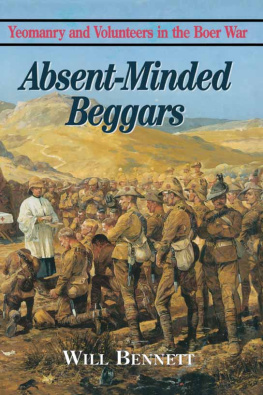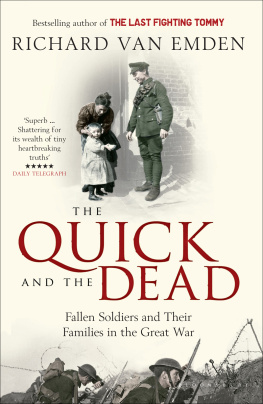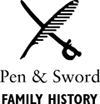
TRACING YOUR BOER WAR ANCESTORS
FAMILY HISTORY FROM PEN & SWORD
Tracing Secret Service Ancestors
Tracing Your Air Force Ancestors
Tracing Your Ancestors
Tracing Your Ancestors from 1066 to 1837
Tracing Your Ancestors Through Death Records
Tracing Your Ancestors Through Family Photographs
Tracing Your Ancestors Using the Census
Tracing Your Ancestors Childhood
Tracing Your Ancestors Parish Records
Tracing Your Aristocratic Ancestors
Tracing Your Army Ancestors 2nd Edition
Tracing Your Birmingham Ancestors
Tracing Your Black Country Ancestors
Tracing Your British Indian Ancestors
Tracing Your Canal Ancestors
Tracing Your Channel Islands Ancestors
Tracing Your Coalmining Ancestors
Tracing Your Criminal Ancestors
Tracing Your East Anglian Ancestors
Tracing Your East End Ancestors
Tracing Your Edinburgh Ancestors
Tracing Your First World War Ancestors
Tracing Your Great War Ancestors: The Gallipoli Campaign
Tracing Your Great War Ancestors: The Somme
Tracing Your Great War Ancestors: Ypres
Tracing Your Huguenot Ancestors
Tracing Your Jewish Ancestors
Tracing Your Labour Movement Ancestors
Tracing Your Lancashire Ancestors
Tracing Your Leeds Ancestors
Tracing Your Legal Ancestors
Tracing Your Liverpool Ancestors
Tracing Your London Ancestors
Tracing Your Medical Ancestors
Tracing Your Merchant Navy Ancestors
Tracing Your Naval Ancestors
Tracing Your Northern Ancestors
Tracing Your Pauper Ancestors
Tracing Your Police Ancestors
Tracing Your Prisoner of War Ancestors: The First World War
Tracing Your Railway Ancestors
Tracing Your Royal Marine Ancestors
Tracing Your Rural Ancestors
Tracing Your Scottish Ancestors
Tracing Your Second World War Ancestors
Tracing Your Servant Ancestors
Tracing Your Service Women Ancestors
Tracing Your Shipbuilding Ancestors
Tracing Your Tank Ancestors
Tracing Your Textile Ancestors
Tracing Your Trade and Craftsmen Ancestors
Tracing Your Welsh Ancestors
Tracing Your West Country Ancestors
Tracing Your Yorkshire Ancestors
TRACING YOUR BOER WAR ANCESTORS
Soldiers of a Forgotten War
Jane Marchese Robinson
First published in Great Britain in 2016
PEN & SWORD FAMILY HISTORY
an imprint of
Pen & Sword Books Ltd
47 Church Street,
Barnsley
South Yorkshire,
S70 2AS
Copyright Jane Marchese Robinson, 2016
ISBN 978 1 47382 242 9
eISBN 978 1 47388 620 9
Mobi ISBN 978 1 47388 619 3
The right of Jane Robinson to be identified as Author of this Work has been asserted by her in accordance with the Copyright, Designs and Patents Act 1988.
A CIP catalogue record for this book is available from the British Library.
All rights reserved. No part of this book may be reproduced or transmitted in any form or by any means, electronic or mechanical including photocopying, recording or by any information storage and retrieval system, without permission from the Publisher in writing.
Pen & Sword Books Ltd incorporates the imprints of Pen & Sword Archaeology, Atlas, Aviation, Battleground, Discovery, Family History, History, Maritime, Military, Naval, Politics, Railways, Select, Social History, Transport, True Crime, Claymore Press, Frontline Books, Leo Cooper, Praetorian Press, Remember When, Seaforth Publishing and Wharncliffe.
For a complete list of Pen & Sword titles please contact
PEN & SWORD BOOKS LTD
47 Church Street, Barnsley, South Yorkshire, S70 2AS, England
E-mail:
Website: www.pen-and-sword.co.uk
LIST OF PLATES
Albert Skedgell. (Courtesy of Roy Tucker)
George Ravenhill was awarded the VC at the Battle of Colenso. (Courtesy of Graham Knight)
The HMS Doris Memorial in Devonport Park , Plymouth. (Courtesy of Tony Marchese)
A street in Nechells , Birmingham , the area where George Ravenhill lived. (Courtesy of Graham Knight)
Fred Griffin from Honiton, Devon. (Courtesy of Jenny Ridd)
Robert Slattery from Lancashire. (Courtesy of Maureen Noonan)
Henry Gardner from Bermondsey died at Intombi Hospital near Ladysmith. (Courtesy of John Shalice)
First page of the letter to Henry s mother informing her of his death. (Courtesy of John Shalice)
Charles Dunn , a young soldier in the Coldstream Guards who died at Standerton Hospital. (Courtesy of David Yabsley)
Lizzie Bowcombe , Charles s girlfriend. (Courtesy of David Yabsley)
British soldiers entering Pretoria in June 1900. (Courtesy of Western Cape Archives and Library , Cape Town)
Boy soldier after the Battle of Colesberg. (Courtesy of the National Media Museum , Science and Society Picture Library)
Robert Milburn , the author s great-uncle , as a young recruit to the Coldstream Guards. (Courtesy of Mary Ann Parkinson)
Robert pictured with soldiers from the Queen Victoria s Black Watch Guard. (Courtesy of Mary Ann Parkinson)
Boer women guarding their belongings. (Courtesy of Sheila Ashford)
Destroyed Boer Farmhouse . (Courtesy of Professor Sir Roderick Floud, from Liddell Hart Centre for Military Archives)
William Duncan , aged five, at school in Dundee. (Courtesy of Malcolm Duncan)
His father , William Neilson Duncan. (Courtesy of Malcolm Duncan)
A ring made from South African gold brought back by John Ball for his sweetheart Bessie. (Courtesy of Nicola Wills)
John Ball s son Steve and wife: the family still treasures the ring. (Courtesy of Nicola Wills)
Medals awarded to Tom Randell of the Royal Artillery. (Courtesy of Robert Wall)
DEDICATION
For my friend Maggie Grant (19402013) whose advice
and support was always invaluable.
Im sorry she wont be able to see this published.
FOREWORD
The inspiration for this book arose in 2006 when I inherited an autograph book belonging to my Belgian grandmother. She had collected many signatures and drawings from foreign visitors whilst working at the Strand Palace Hotel in London from 1919 onwards. This led to me researching her history and trying to discover whether she was one of the 250 , 000 Belgian refugees who fled their homeland when the Germans invaded in 1914.
I explored archives in this country and in Belgium. In London I searched workhouse records from 1914. Sadly I could not find her. However , in the London Metropolitan archives I did discover an English family consisting of a mother and four children , one daughter of whom had a different surname. Coincidentally I had been looking for a theme for a novel and this family became my inspiration: what circumstances led this girl to have been living with this family? The daughter had been born in 1902 , at the end of the Boer War , and I imagined that she was the result of a relationship her mother had while her husband was away fighting in South Africa.
I had studied history at school and had undertaken a university degree in social history and yet I had not been taught anything about the Boer War. Therefore I needed to undertake considerable research in order to flesh out my story. This included reading about the workhouses during this period and extensive research about this war.
A synopsis of the novel was submitted to Pen and Sword publishers when something unexpected happened. They suggested that I write a non-fiction book concerning the ordinary soldiers of the war and what support they or their families received afterwards in a world without a welfare state. The book was to contain real-life testimonies , a veritable challenge when those men and their direct families had died a long time ago. Diaries in archives provided considerable illumination but contacting regional newspapers , with a request for personal stories , yielded greater results. I was privileged to receive many stories , letters and photographs of this almost forgotten war. I have tried to include as many as possible in this book in order to throw a light on those men who fought and died in the heat 6 , 000 miles from home and to recall the hardships many women and children suffered as a direct result. Widowed or caring for a disabled husband , times were tough for the ordinary soldier s family.
Next page
